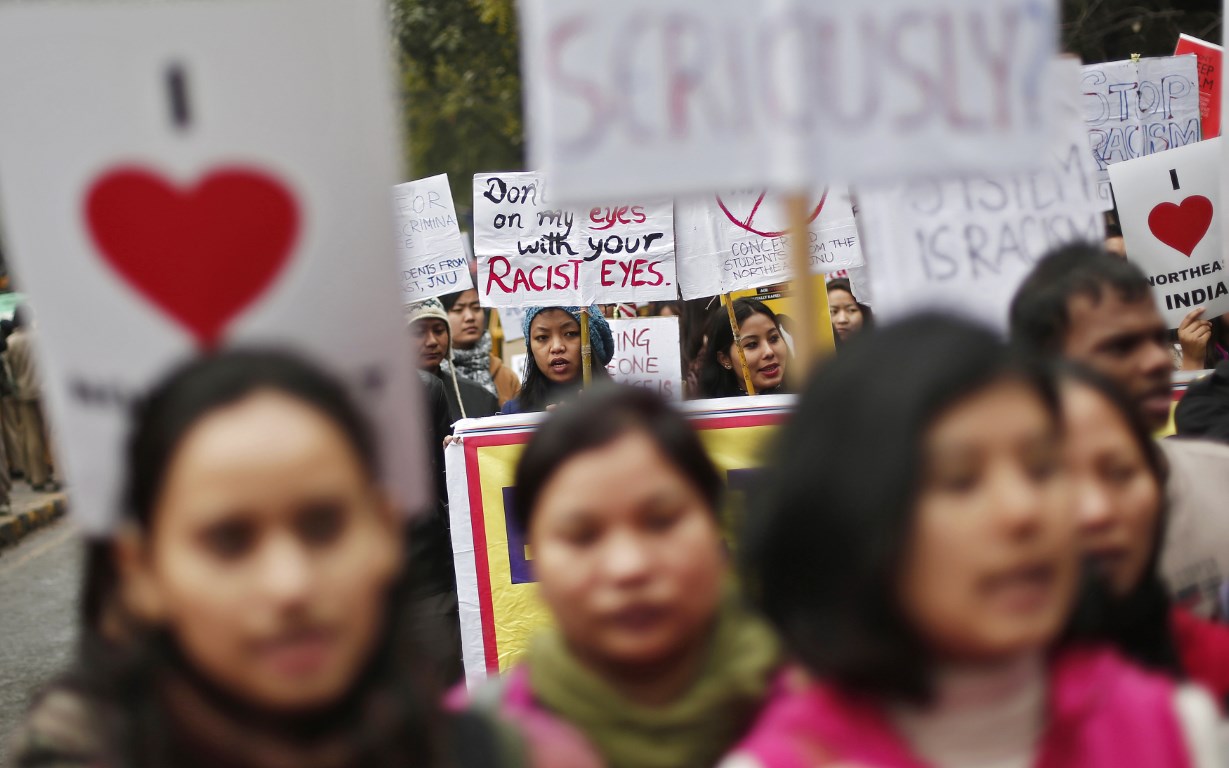Racial abuse of Indians in India
April 27, 2017 | Expert Insights

Racism is the discrimination of a particular race based on certain characteristics and abilities, which divides people into ‘us’ and ‘them’. It is prejudice against people based on the colour of their skin or where they come from. Many cases of visible racism have been noted against Indians around the world for their brown skin. But racism is also visible in our country among the Indian communities.
Due to its large regional diversity, there has been multitude of local clashes where communities are lined up against each other ideologically or for resources. On the 25th of April 2017, Mizoram chief minister Lal Thanhalwa stated that he has faced racial abuse a lot of times in the country and it is the worst thing when an Indian does not recognize his own countrymen. Such abuses are step motherly treatment towards people belonging to a certain region which gives rise to secessionism and regionalism. He further stated that people in North East face this type of ignorance not just by the common people, but even by the politicians and national leaders.
There have been many cases reported where students from the North East studying elsewhere in the country have committed suicide due to assaulted remarks and racial abuse done by their landlords, employers, etc.
ANALYSIS
The seven states of India, also known as the ‘Seven Sisters’ are connected to the mainland with a sliver of land that spans over the northern part of Bangladesh. This distance has caused a psychological disconnect from the mainland. They face racial discrimination in the rest of the country for their Mongoloid looks.
The impact of racism is seen both on the individuals who experience it as well as the wider community. It results in reduced productivity, poor physical health and mental distress. It also opposes economic and social participation which can in turn cause social exclusion. It has a physiological and psychological impact on the person. Harassment from employers and verbal abuse through words such as ‘Momos’, ‘Chinkis’, etc leads them to take extreme steps of drugs and suicide.
ASSESSMENT
The hate speech laws in the Constitution of India allows a citizen to seek punishment of anyone who shows disrespect to him on the basis of caste, race, language, religion, etc. However, with increase in the racial attacks on the North Eastern people, a more stringent action had to be taken by the government. This led to the amendment of the Indian Penal Code. Section 153C of the IPC, states that, “Any words, either spoken or written, which attempt to discriminate individuals on the basis of race, will be a non bailable offence punishable with an imprisonment of up to five years and a fine”. However, five years of imprisonment is an extreme step and implementation of it practically has not been reported so far. The setting up of north east cells with helpline numbers by the Central Government has helped to strengthen the legal framework against racial discrimination. Grievances can be reported with these cells by the north east people seeking education or career elsewhere in the country. However, despite these efforts, racial attacks on people from the region, especially students and women, still continues in the major cities of India.








Comments